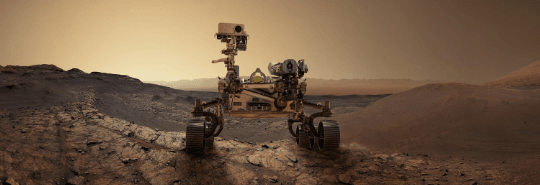Four Years of breakthrough on Mars
On February 18th, 2021, four years ago, one of the most groundbreaking advancements in astronomy was avenged: Perseverance landed on Mars. Not the ideology or the state of mind, but rather the car-sized revolutionary robot commonly known as the Mars Rover.
The Perseverance rover isn’t the first robot to step “foot” on Mars; many have come before it with similar goals but lacking in the skill to achieve them. In fact, five rovers predate the landing of the Perseverance, some focused on finding stored water and others determined to assess the quality of living conditions. However, none of them has been as powerful and successful as the Perseverance rover, which is still in contact with our very own planet four years after its touchdown.
Perseverance was launched in July of 2020 with a mission to investigate the Red Planet for microbial signs of life. You may be familiar with hypotheses suggesting Mars is the most hospitable planet in our solar system and could very well be a “back-up planet” should anything happen to our home planet. Well, that's what this rover was designed to prove.
The Perseverance Rover was launched to Mars’ Jezero crater, what scientists believe is a favorable spot for the culture of life. Keep in mind that the “life” that the Mars Rover is looking for won’t look like you or me or your pet. Instead, the rover is searching for bacteria, single-celled organisms, or DNA structures in the rocks of the Red Planet. This rover is the “largest, heaviest, most sophisticated vehicle NASA has ever sent to the Red Planet, ” says NASA. The robot is equipped with extensive arms, powerful drills, precise scanners, and the meticulous ability to collect minute samples and preserve them for future studies. Unlike any rover before it, Perseverance collects and packages up samples into titanium tubes and distributes them across the surface of Mars so that they can actually be retrieved by future exploratory teams and studied in depth on Earth.
So what has come of this four-year mission? Perseverance has discovered the presence of cooled volcanic rocks within the crater, demonstrating past interaction of the surface of Mars with water. Geological lake beds were discovered as well, revealing a longstanding history of water on or under the surface of Mars.
Most likely one of the most impressive parts of Perseverance’s time on Mars is the Mars Oxygen In-Situ Resource Utilization Experiment, or MOXIE. The experiment carried out by the rover was able to generate a breathable, oxygen based atmosphere on Mars, similar to the one you’re breathing in right now!
With Perseverance’s efforts, we could be looking towards a future not adjacent to Mars, but on its surface. Let this little robot be of inspiration: working tirelessly to prepare for a better tomorrow, because we never know if we’ll need a backup plan. Happy fourth birthday, Perseverance!
Sources:
- https://www.jpl.nasa.gov/missions/mars-2020-perseverance-rover/
- https://science.nasa.gov/mission/mars-exploration-rovers-spirit-andopportunity/#:~:text=This%20infographic%20highlights%20NASA's%20twin,concluded%20 its%20mission%20in%202010.
- https://www.nasa.gov/missions/mars2020perseverance/7thingstoknowaboutthemars2020perseverancerovermission/#:~:text=Credits%3A%20NASA%2FJPL%2 DCaltech&text=Loaded%20with%20scientific%20instruments%2C%20advanced,sent%20to%20the%20Red%20Planet.
- https://science.nasa.gov/mission/mars-2020-perseverance/science-highlights/https://technetics.com/mars-perseverence-rover-touch-down/










